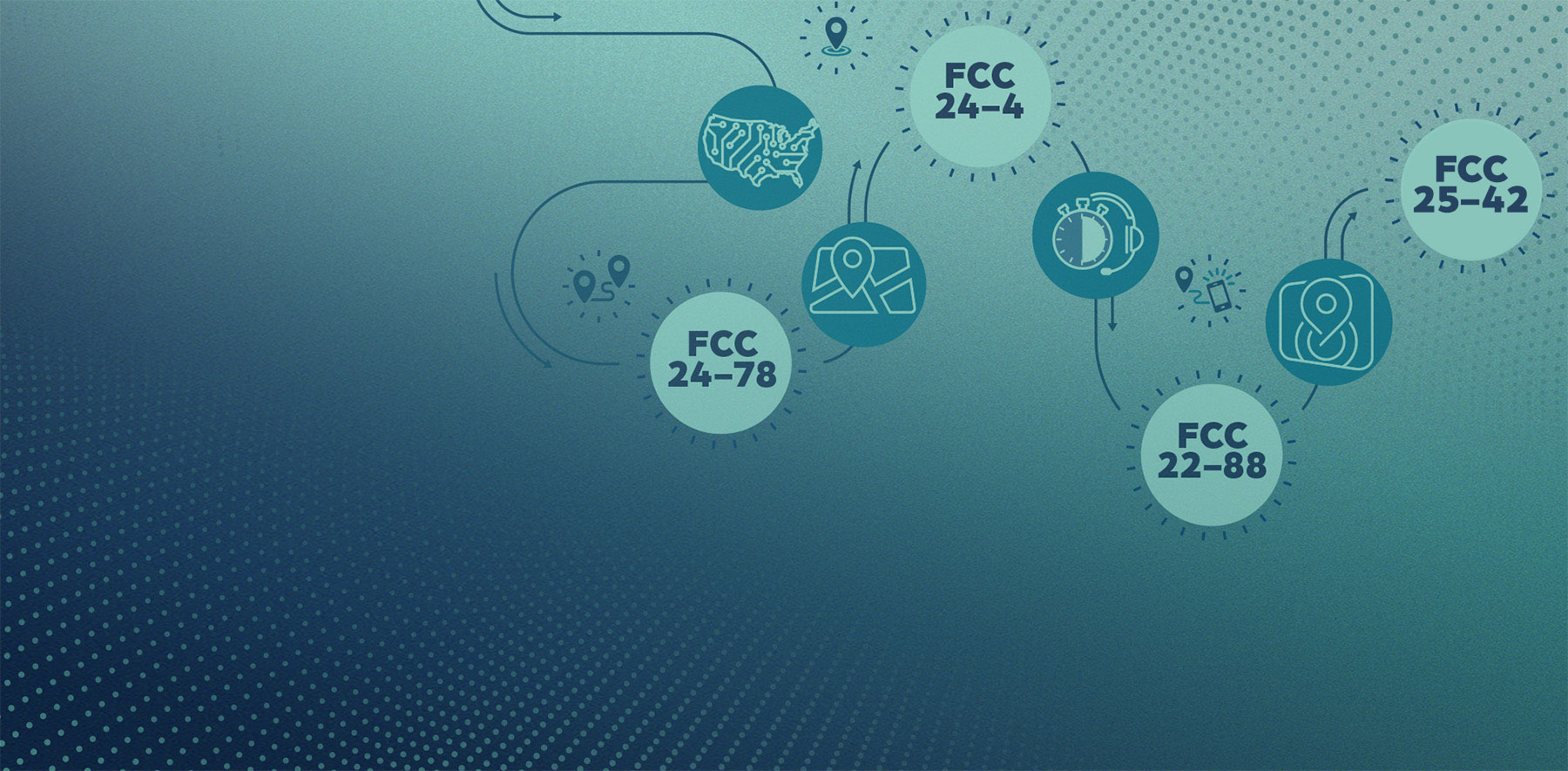Accelerating the Future of Next Generation 911 Services
By a unanimous vote on July 18, 2024, the Federal Communications Commission took a groundbreaking step forward to accelerate the transition to...
2 min read
By Jerry Wilke, Director of Sales Engineering
Aug 26, 2025
The transition to Next Generation 9-1-1 (NG9-1-1) represents the most significant step forward in our lifetime to improve emergency response capabilities and public safety outcomes. One of the most critical components of this transformation is the integration of wireless carrier networks with Emergency Services IP Networks (ESInets). This shift is not just a technological upgrade; it is a collaborative undertaking that depends on strong cooperation between public safety agencies, technology providers, and wireless carriers.
Collaboration is crucial to ensure carriers can migrate smoothly and comply with FCC 24-78, the NG9-1-1 transition order. The FCC reinforced this within the order, encouraging stakeholder cooperation and usage of the rules as a default that can be altered through agreement.
A seamless transition to advanced emergency communication systems can be achieved through close partnership.
The NG9-1-1 initiative is designed to enhance the efficiency, speed, security, and interoperability of emergency communications. This includes the ability to transmit not only voice and text, but also images and video to public safety answering points (PSAPs). For wireless carriers, migrating to NG9-1-1 means updating infrastructure to meet IP-based protocols, ensure location accuracy, and maintain high reliability and redundancy.
Achieving all this alone can be overwhelming, particularly as different states and regions adopt NG9-1-1 at varying speeds and through different governance models. That’s where public safety partnerships come in — collaborative frameworks that bring together expertise, shared goals, and unified planning across all stakeholders.
Wireless carrier networks play a vital role in emergency response as they are the entry points for 80% of emergency requests for assistance (RFAs) nationwide. With the transition to NG9-1-1, calls will be delivered to an ESInet, ensuring RFAs and associated data are accurately and securely routed to the correct PSAP.
The FCC has required 9-1-1 calls to be delivered in phase 1 (SIP), then phase 2 (NENA i3 or another commonly accepted standard), within specific time frames following a valid request from a PSAP. This requires a deep understanding of local ESInet configurations, NG9-1-1 points of interconnection, and evolving public safety standards and requirements.
Without coordinated efforts, risks include call delay, improper routing, degraded service, or even failed calls — all unacceptable outcomes when lives are on the line. This is why wireless carriers benefit immensely from engaging with trusted partners who understand the intricacies of these new, advanced ESInet systems.
Experience matters. Ideally, your partner will have a proven track record in NG9-1-1 migrations and tight relationships with PSAPs, and they should be well-versed in 9-1-1 call routing and location services. This will provide a critical bridge between wireless carriers and public safety networks. Also inquire about:
ESInet connectivity and interoperability that aligns with NENA i3 standards.
Location-based routing to ensure that calls reach the correct PSAP, even as users move.
Operational support for network migration, testing, and service continuity.
Real-time monitoring and analytics to ensure system performance and resilience.
In addition to the NG9-1-1 transition, several current and upcoming regulations are affecting wireless carriers. Seek a partner who can address other needs, including 988 georouting and outage notification requirements.
By partnering with an experienced provider capable of supporting complex migrations, wireless carriers gain access to extensive technical expertise and can confidently achieve regulatory compliance, assured that every emergency call meets the highest standards of reliability and accuracy.
As the United States continues its rollout of NG9-1-1, the importance of strategic partnerships will only continue to grow. Wireless carriers, public safety officials, and technology providers must work together to ensure a unified and secure emergency communications infrastructure.
The transition to NG9-1-1 is more than a network upgrade; it’s a public safety imperative. With the right partnerships, migration can be seamless — and ultimately lifesaving.
**This article was originally published in the CCA Voice.

By a unanimous vote on July 18, 2024, the Federal Communications Commission took a groundbreaking step forward to accelerate the transition to...

The digital transformation has been reshaping industries across the board, and emergency services are no exception. Recent regulatory shifts and...

FCC compliance can feel like threading a legal needle—especially with new Next Generation 911 (NG911) requirements now in effect. As of March 25,...

At Intrado, we understand the complexity of regulatory compliance—because we’re in it with you. We partner with service providers, public safety...